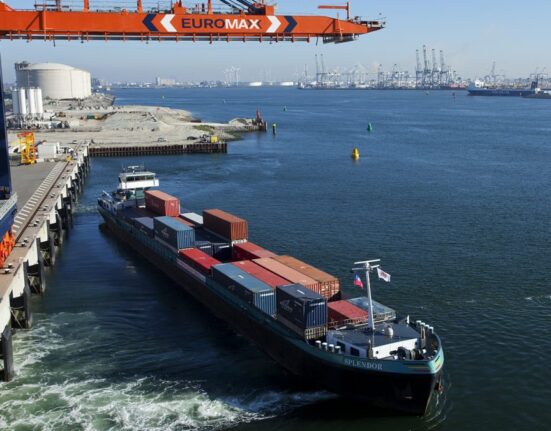The collapse of Beam, a prominent UK offshore wind and subsea technology firm, has sent shockwaves through the industry, leaving creditors reeling with debts exceeding £50 million. The company’s downfall in May left a trail of financial chaos, impacting various trade partners across Scotland and England.
Aberdeen-based firms like Kraken Robotics, Omni Subsea, Unique Group, and Dales Marine found themselves among the many creditors grappling with significant sums owed by Beam. The repercussions extended to Ellon-based Film-Ocean, Oban-based Jifmar Scotland, and Oldmedrum-based Subsea Tooling Services.
“Beam’s collapse was unforeseen and has had a profound impact on multiple stakeholders,”
remarked industry expert Dr. Smith.
“The substantial debts left in its wake have raised concerns about financial stability within the sector.”
In addition to owing millions to trade partners, Beam faced a staggering debt of over £35.4 million to investors through convertible loan notes (CLNs), coupled with unpaid utility bills, pension contributions, rent arrears, and outstanding tax obligations. As administration loomed large over the company, it became apparent that unsecured creditors might not recover any funds due to insufficient assets.
“The financial turmoil at Beam underscores the challenges faced by companies in navigating rapid expansion amidst evolving market dynamics,”
noted financial analyst Jane Thompson.
Beam emerged from the merger of Rovco and Vaarst under the leadership of Chief Executive Brian Allen. With a strong focus on subsea robotics and AI-driven solutions for offshore industries—particularly within the burgeoning offshore wind sector—the company rebranded as Beam in an ambitious bid to capitalize on opportunities in Scotland and beyond.
However, despite initial success attracting investments totaling close to £50 million from notable backers like Foresight Group, Equinor, and IQT—a leading American defense sector investor—the company’s growth trajectory took an unexpected nosedive.
“Beam’s demise serves as a cautionary tale about the perils of overextending amidst rapid expansion plans without adequate risk mitigation strategies,”
highlighted industry analyst David Reynolds.
The timeline leading up to Beam’s collapse paints a picture of mounting financial strain exacerbated by failed attempts to secure additional funding following an abrupt withdrawal by a key investor. Efforts to solicit buyers for Beam’s business assets before April 30 proved futile when interested parties backed out due to uncertainties surrounding funding commitments.
In light of these developments, administrator RSM stepped in to navigate Beam through insolvency proceedings while exploring potential sale options. Ultimately, Switzerland-headquartered Rosenxt Group emerged as the successful bidder for acquiring Beam’s business assets—including vital intellectual property—in a deal valued at £750,000.
Amidst ongoing negotiations related to asset sales—including the Xplorer autonomous offshore service vessel—administrators emphasized stringent measures aimed at safeguarding creditor interests while ensuring transparent proceedings throughout the insolvency process.
“As we witness the aftermath of Beam’s collapse unfold, it underscores broader implications for stakeholder engagement strategies employed by companies facing financial distress,”
commented legal expert Sarah Davies.
The fallout from Beam’s demise reverberated across numerous entities entangled in its extensive web of debts amounting to around £13.6 million spread across 266 firms operating within the offshore supply chain—an unsettling reminder of the far-reaching consequences stemming from corporate insolvency events.
With investors facing bleak prospects of recovering substantial sums tied up in convertible loan notes issued by Beam—a setback compounded by diverse shareholding structures featuring prominent names like Legal & General , Foresight Group , Equinor Ventures , British Business Bank , Future Planet Capital , IQT , and Tawazun Strategic Development Fund —the episode serves as a stark illustration of volatility within investment landscapes intertwined with tech-driven ventures prone to market fluctuations.
As industry players reflect on lessons learned from Beam’s abrupt unraveling amid grand ambitions fraught with financial vulnerabilities—it casts a sobering light on risk management imperatives essential for sustainable growth trajectories within dynamic sectors brimming with innovation potential.









Leave feedback about this